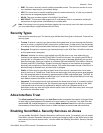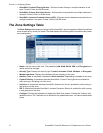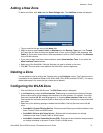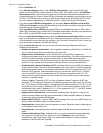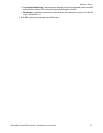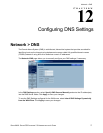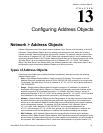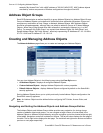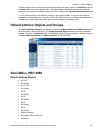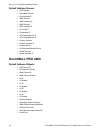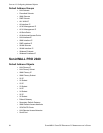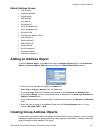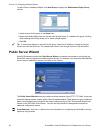SONICWALL SONICOS ENHANCED 2.5 ADMINISTRATOR’S GUIDE
79
Network > Address Objects
C
HAPTER
13
Chapter 13: Configuring Address Objects
Network > Address Objects
Address Objects are one of four object classes (Address, User, Service, and Schedule) in SonicOS
Enhanced. These Address Objects allow for entities to be defined one time, and to be re-used in
multiple referential instances throughout the SonicOS interface. For example, take an internal Web-
Server with an IP address of 67.115.118.80. Rather than repeatedly typing in the IP address when
constructing Access Rules or NAT Policies, Address Objects allow you to create a single entity called
“My Web Server” as a Host Address Object with an IP address of 67.115.118.80. This Address
Object, “My Web Server” can then be easily and efficiently selected from a drop-down menu in any
configuration screen that employs Address Objects as a defining criterion.
Types of Address Objects
Since there are multiple types of network address expressions, there are currently the following
Address Objects types:
•Host – Host Address Objects define a single host by its IP address. The netmask for a Host
Address Object will automatically be set to 32 bit (255.255.255.255) to identify it as a single host.
For example, “My Web Server” with an IP address of “67.115.118.110” and a default netmask of
“255.255.255.255”
•Range – Range Address Objects define a range of contiguous IP addresses. No netmask is
associated with Range Address Objects, but internal logic generally treats each member of the
specified range as a 32 bit-masked Host object. For example “My Public Servers” with an IP
address starting value of “67.115.118.66” and an ending value of “67.115.118.90”. All 25 individual
host addresses in this range would be comprised by this Range Address Object.
•Network – Network Address Objects are like Range objects in that they comprise multiple hosts,
but rather than being bound by specified upper and lower range delimiters, the boundaries are
defined by a valid netmask. Network Address Objects must be defined by the network’s address
and a corresponding netmask. For example “My Public Network” with a Network Value of
“67.115.118.64” and a Netmask of “255.255.255.224” would comprise addresses from
67.115.118.64 through to 67.115.118.95. As a general rule, the first address in a network (the
network address) and the last address in a network (the broadcast address) are unusable.
• MAC Address – MAC Address Objects allow for the identification of a host by its hardware
address or MAC (Media Access Control) address. MAC Addresses are uniquely assigned to every
piece of wired or wireless networking device by their hardware manufacturers, and are intended to
be immutable. MAC addresses are 48 bit values that are expressed in 6 byte hex-notation. For



